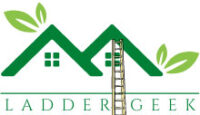An attic is a space with a lot of untapped potentials. It’s an area you can create additional storage or turn it into a game room, spa retreat, or a home office.
One way of making your attic a usable space is by installing an attic ladder. This can be replacement attic stairs or a ladder. The aim is to help you go up and down the attic in a safer, faster and easier way.
The attic ladder is made to fit properly between the attic floor and the room below it. However, you should make that room maneuverable.
While it’s easy to install an attic ladder, it’s also important to maintain it in a good condition to avoid accidents. So then, here is how to adjust attic ladder to make its springs, hinge and arm sturdy.

How to Adjust Attic Ladder Springs
An attic ladder will deteriorate with usage and as it ages it might cause safety issues. Springs may get damaged, worn, broken, loose, or rusted causing the whole assembly to weaken. Therefore you should regularly inspect these components to ensure that they are performing well.
Here is how you can adjust the attic ladder springs.
First, you need to pull down the stairs when adjusting the springs. A flashlight, open-end wrench and assistant are essential when carrying out this exercise.
Step one: Begin by locating the adjustment nuts that are found on the J-hooks’ threaded stems linking each spring with the corresponding power arms.
Step Two: Use an open-end wrench to loosen the locking nut fastening the adjustment nuts to the threaded stem. This eliminated the gap between the door and the frame.
Step Three: Pull down the door with the help of your assistant and close it again. Tighten the locking nuts in the opposite direction of the corresponding adjustment nuts. Rotating the adjuster nuts can help to eliminate the gap.
Required Tools to Adjust Attic Ladder Springs
The required tools are
- Flashlight
- Open-end wrench
- One assistant
How to Fix Attic Ladder Spring
The following are ways of fixing the springs of your attic ladder.
Step one: Go up the attic using a stepladder because it’s risky to climb up using an attic ladder with compromised springs. These components are more relaxed when then the ladder is in a stowed position.
Step Two: Close the attic door when you enter the attic with the help of an assistant. It’s important to have an assistant when inspecting your attic ladder as well as other tools.
First look at the brackets at the door hinge, then tighten if you find them loose. You can use a screwdriver or wrench based on the attachment type of your attic ladder.
Step Three: Grab each spring by the middle and stretch it towards one end as your assistant gently pull the spring’s hooked end out of the ring holding it.
Step Four: Replace the springs if it’s compromised or adjust them and replace them back. Repeat the same procedure on the other side in order to counterbalance it again.
Required Tools to Fix Attic Ladder Spring
- Step Ladder
- Screwdriver/Wrench
- Springs
- One assistant
How to Fix Ladder Hinge
A pull-down step enables you to access the roof crawl space or attic. However, you can’t do that when its hinges are loose, stiff or squeak. A repair restores them to normal working order thus making it easier to use the stairs.
Here is how to fix attic ladder hinges.
Step one: Use an old toothbrush to clean the dirty hinges caused by accumulated oil and dust. Warm water can help to remove stubborn dirt. Next, dry the clean area.
Step Two: Tighten the screws especially if the plates rattle when steps raise or lower. Usually, screws loosen with repeated use thus causing the steps to wobble.
So you can tighten the screws and bolts on either side of each section of the steps. However, you should be careful when tightening or loosening the friction bolts because they determine how fast the steps move downwards.
Step Three: Spray silicon-based lubricant on the joints including stiff elbow joints and hinges. Move the hinges to work the lubricant into the entire mechanism. Silicon-based lubricant is better than moisture-dispersing sprays or oil-based lubricants because it doesn’t attract dirt.
Tools Required to Fix Ladder Hinge
- Old Toothbrush
- Warm water
- Screwdriver/wrench
- Silicon-based lubricant/Oil-based lubricants
How to Fix Attic Ladder Arm
You can have a faulty attic ladder without knowing because it looks nice as long as you’re not using it regularly. However, this will come to light when it’s time to collect an item in your attic storage.
While a minor repair might work, it’s advisable to inspect the attic ladder regularly even when it’s not in use and repair any broken parts immediately.
Routine maintenance protects your family against any failing equipment that can cause potential injuries. It also keeps the ladder fully functional for several years.
Here is how to fix the attic ladder arm:
Step One: Set the ladder in a climbable position. Inspect the nut and bolts, twist them using your fingers to see if there is any that is loose. Use an adjustable wrench to tighten the loose nuts.
Step Two: Inspect the springs next to the metal arms on the side of the ladder that connects its sections. You’re likely to find out that there are some loose or missing springs. If so, climb up the ladder to the attic and close the stairs with the help of your assistant.
Use a pair of pliers and wear your heavy-duty gloves when pulling the loose end of the springs and reattaching them to their respective holes. Lastly, lower the stairs and climb down.
Step Three: Inspect the metal arms on either side of the stairs to find out if they’re bent. You need to buy an arm replacement kit from the home improvement supplier or manufacturer if the old ones are deformed.
Then remove the arm from one side of the ladder using a Philips-head screwdriver or a wrench depending on its model. Next fix the replacement arms based on the manufacturer’s instructions.
Tools Required to Fix Attic Ladder Arm
- Screwdriver/Wrench
- Arm Replacement Kit
- Pliers
- Gloves
Conclusion
An attic can be used as a storage area or an extra room. You can access this space using a ladder or stairs. However, you must regularly maintain this equipment to avoid injures when a family member climb up when it’s compromised.
This article has provided you with tips on how to adjust attic ladder and fix its different parts such as springs, hinges, and arms. You can use the information to keep your attic ladder in a good condition thus enjoy climbing up and down your attic office or store.
Joseph is the owner of LadderGeek. He is a home remodeling enthusiast. He has created this blog to share some of his knowledge on Ladder and accessories.


